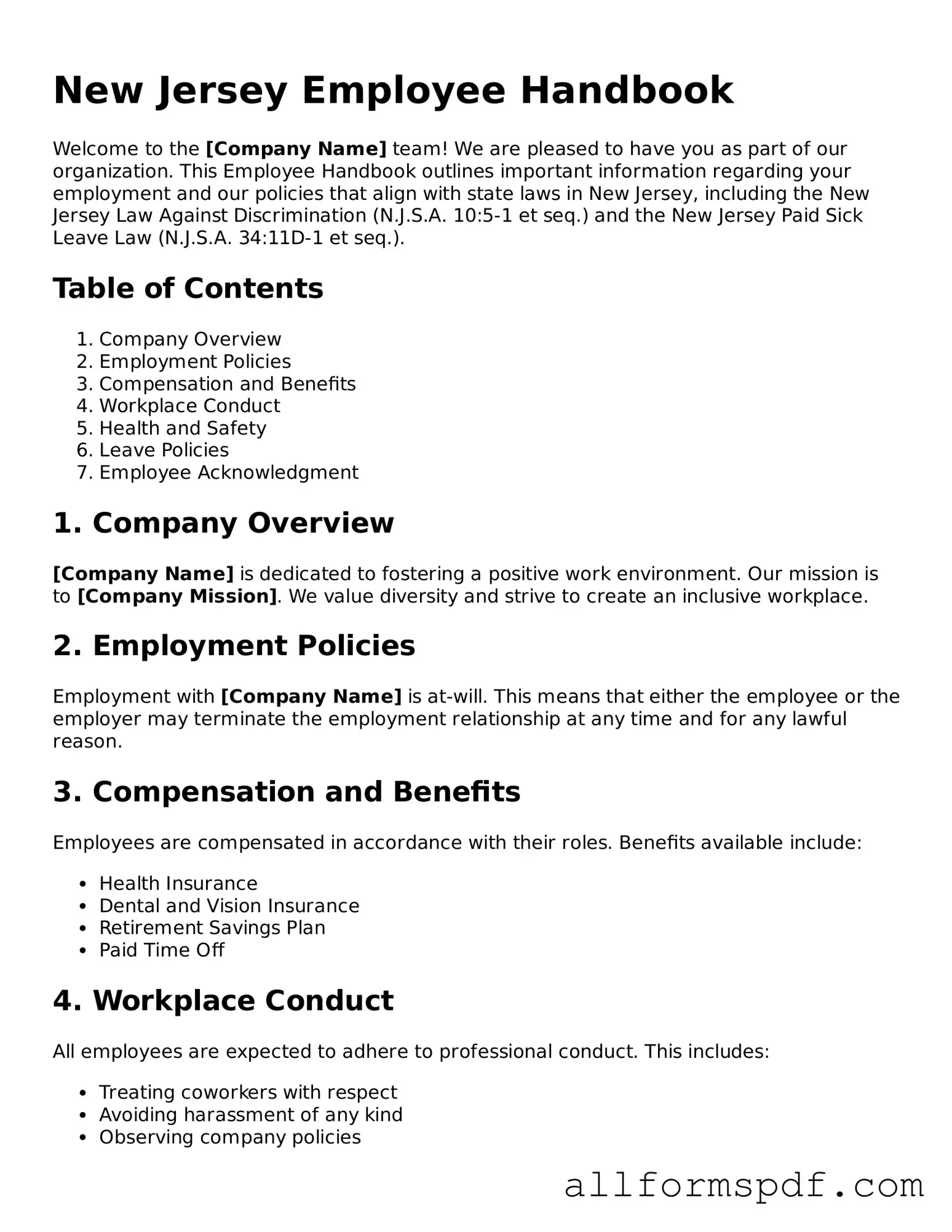Filling out the New Jersey Employee Handbook form is a crucial step for both employers and employees. However, there are common mistakes that can lead to confusion and potential issues down the line. Understanding these pitfalls can help ensure that the form is completed accurately and effectively.
One frequent mistake is neglecting to read the entire handbook before signing. Employees may rush through the document, missing important policies and procedures. This oversight can result in misunderstandings about workplace expectations, which can affect job performance and satisfaction.
Another common error involves failing to ask questions. If something is unclear, employees should feel empowered to seek clarification. Ignoring confusing sections can lead to misinterpretations of the company's rules or benefits, which may have long-term consequences for the employee.
Many individuals also overlook the importance of updating personal information. When changes occur, such as a new address or marital status, these should be reflected in the handbook. Keeping this information current is essential for effective communication and benefits management.
Additionally, some employees may forget to sign and date the form. This simple step is crucial, as it indicates acknowledgment of the handbook's contents. Without a signature, there may be disputes regarding whether an employee was informed of company policies.
Lastly, failing to keep a copy of the signed handbook can be detrimental. Employees should always retain a personal copy for reference. In the event of a disagreement or question about policies, having this document readily available can provide clarity and support their position.
